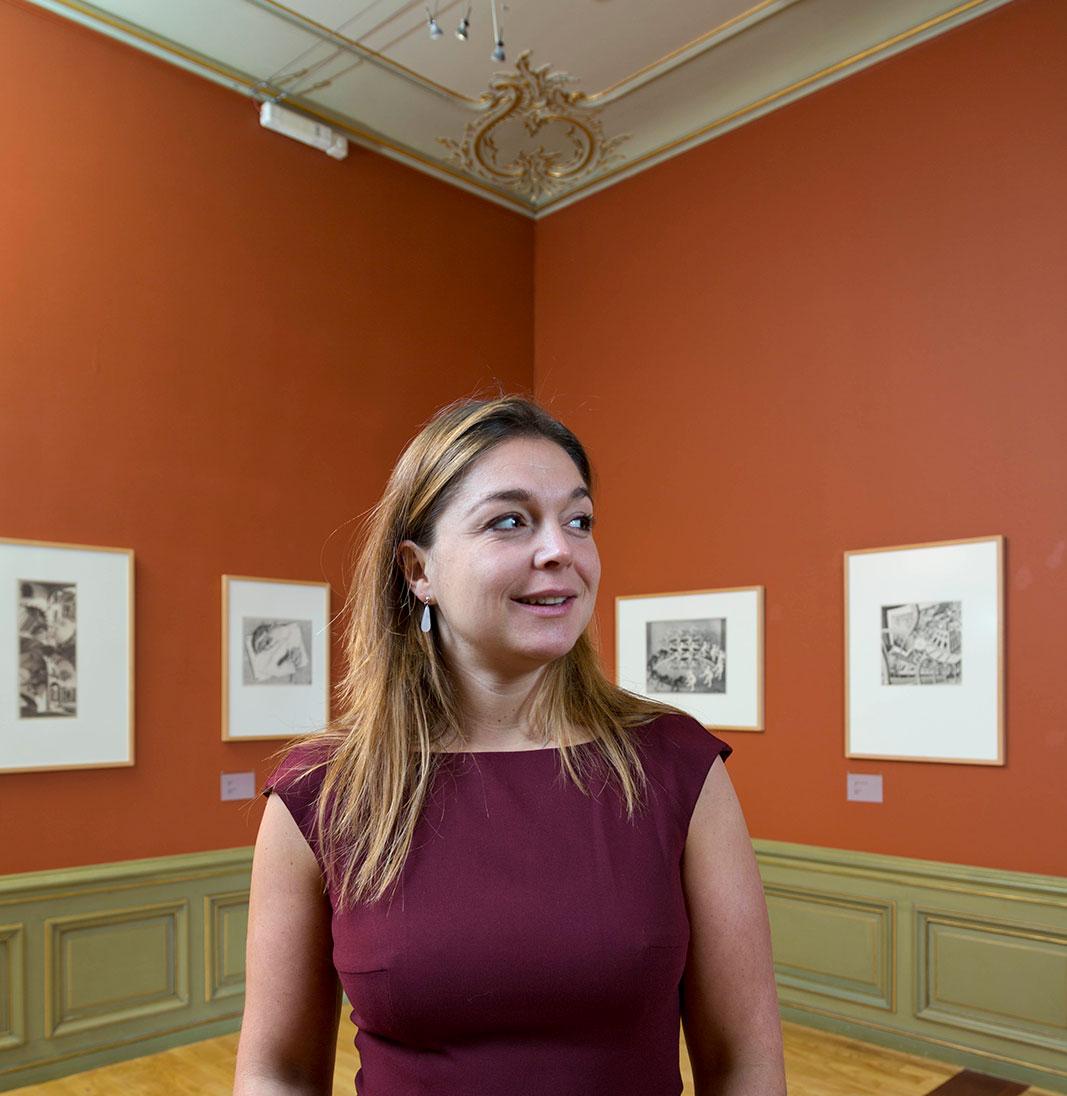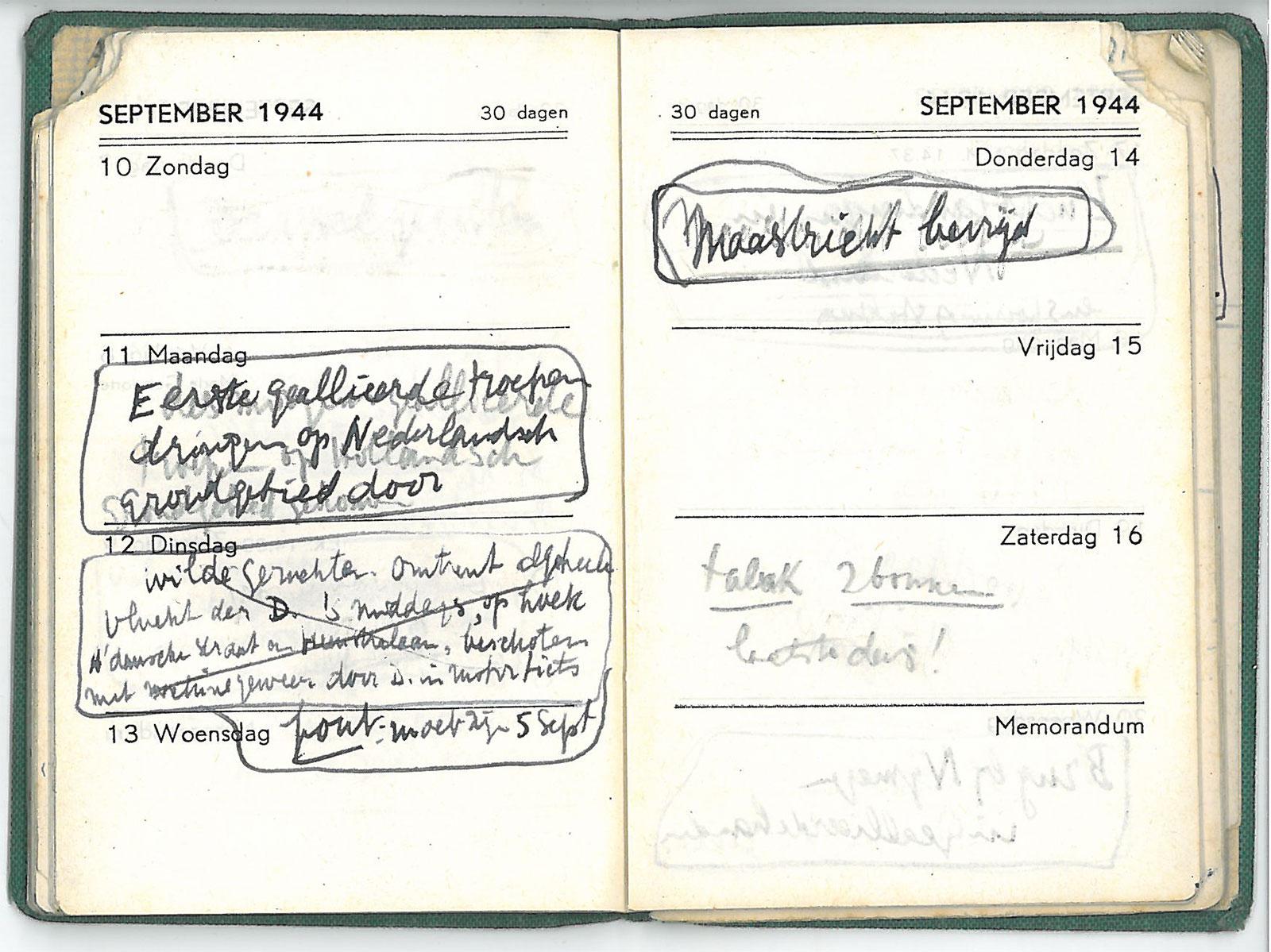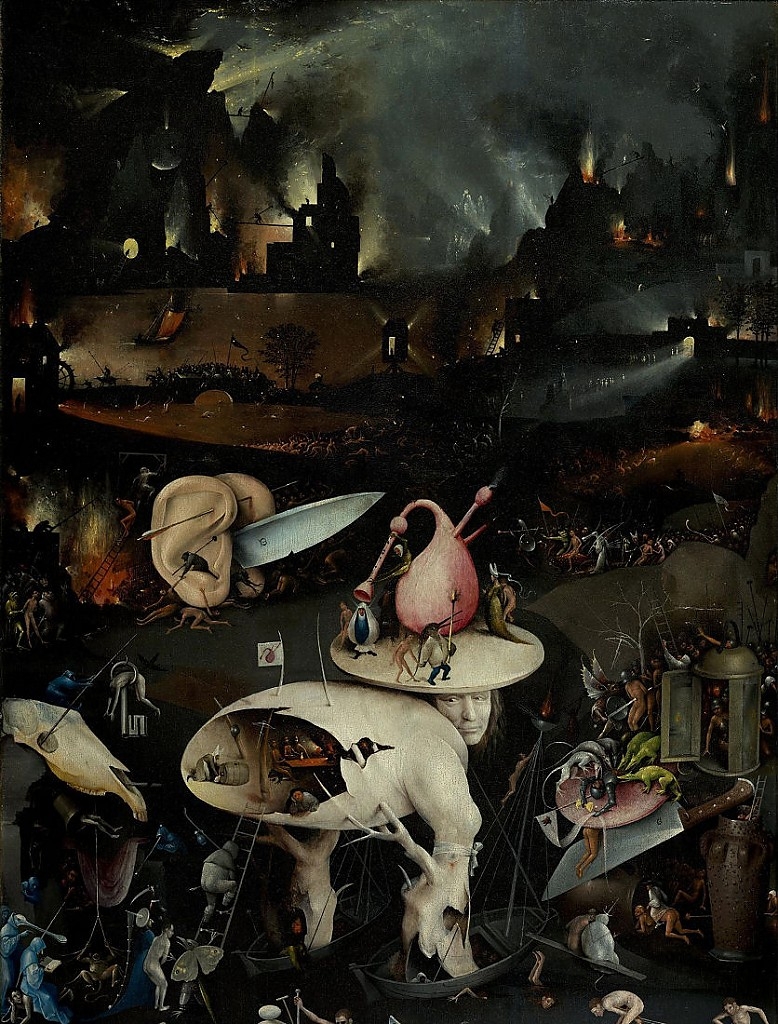
In 2016 it was 500 years ago that late medieval painter Jheronimus Bosch (1450-1516) passed away. The world-famous artist was commemorated in this year on a grand scale with a large exhibition and many other activities globally. But what does Jheronimus Bosch’s work have to do with Escher? More than you think!
Escher’s work has a stranger in its midst. Escher is always described as a one-man art movement. An artist who doesn’t subscribe to art movements, trods his own path and didn’t copy anyone else’s work whatsoever. But for one artist he made an exception: Jheronimus Bosch.
Hell
It is virtually unknown, but in 1935, Escher made a copy of a work by this medieval master from 's-Hertogenbosch: a lithograph of a part of Hell, the right-hand panel of the Tuin der Lusten (The Garden of Earthly Delights) triptych.
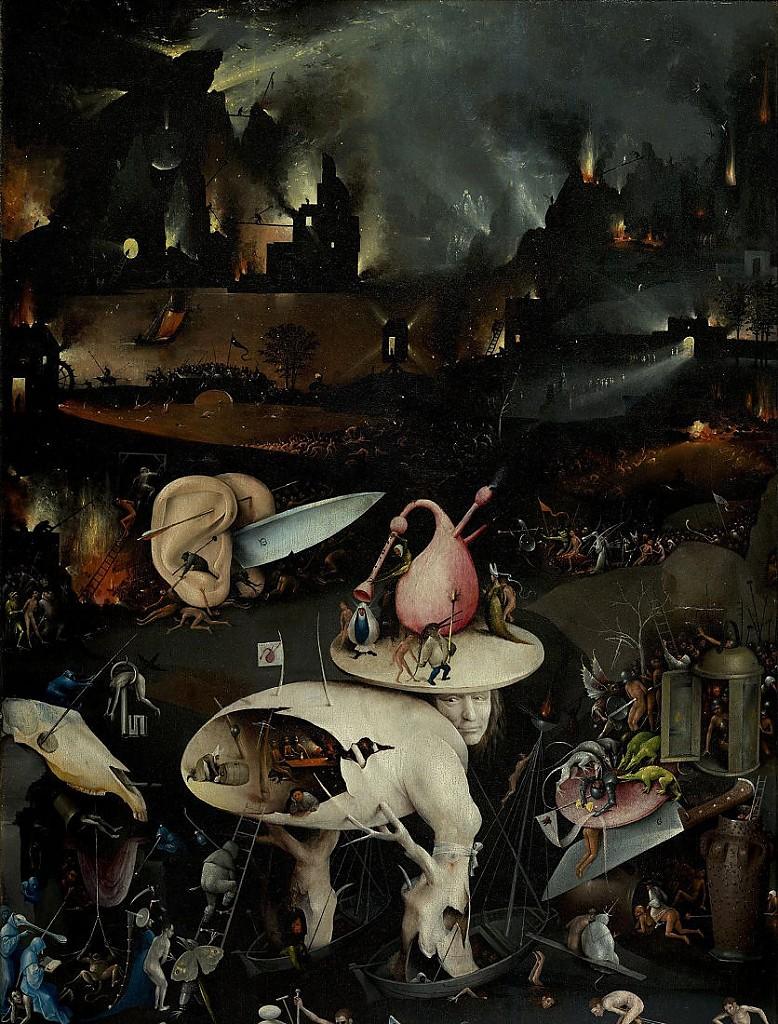
This triptych by Jheronimus Bosch is one of the most discussed works of art produced by late medieval Dutch masters. It’s on show in the Museo del Prado in Madrid and has a status comparable to De Nachtwacht (The Night Watch). Only the privileged view it alone. The rest must make do with a glimpse here or there in the company of many other museum visitors. Hungry art lovers are kept back by a chord and watched eagerly by a guard at all times.
And that’s not surprising, you won’t tire of The Garden of Earthly Delights quickly. You’ll want to take it all in, understand it, appropriate it, drink it as if it were the last bit of water in a desert. You don’t understand it, but you know and you feel that it’s unique. You want to look, look and look again. Because what was the artist’s actual aim with this work? And what do all symbols mean? A consensus is yet to be reached.
What do all experts agree on? On the fundamentals: The Garden of Earthly Delights is a triptych where the three individual panels tell a successive story. The left-hand panel depicts an imaginary scene of paradise. On the middle panel, Bosch painted a garden in which 120 naked figures give in to their passions. But there’s a price to pay for all this frivolity, as can be seen in the right-hand panel; it leads to Hell.
Tree man
On this panel, people are being tortured in an unlikely creative manner. The most striking, however, is a remarkable being in the middle of the panel. This figure is often described as the ‘tree man’ due to his two legs, formed by tree stumps. These ‘tree legs’ balance in two wobbly boats. The creature’s body is made of a broken shell. The head resembles a human head, regarded by some as a portrait of the painter himself. On his head, he has a disc on which figures walk around an enormous set of bagpipes, symbolising lust. The tree man looks over his shoulder, his eyes focused on his own behind. In the fragmented shell of his behind, a tavern scene is playing out, and naked sinners are going outside for a drink. In the bottom left, a kind of bride and groom are at the point of entering the shell via a ladder. A lot of speculation also surrounds the meaning of the tree man. Some people regard him as an evil counterpart of the tree of life in the left-hand panel, as a tree of death and evil in the middle of hell.
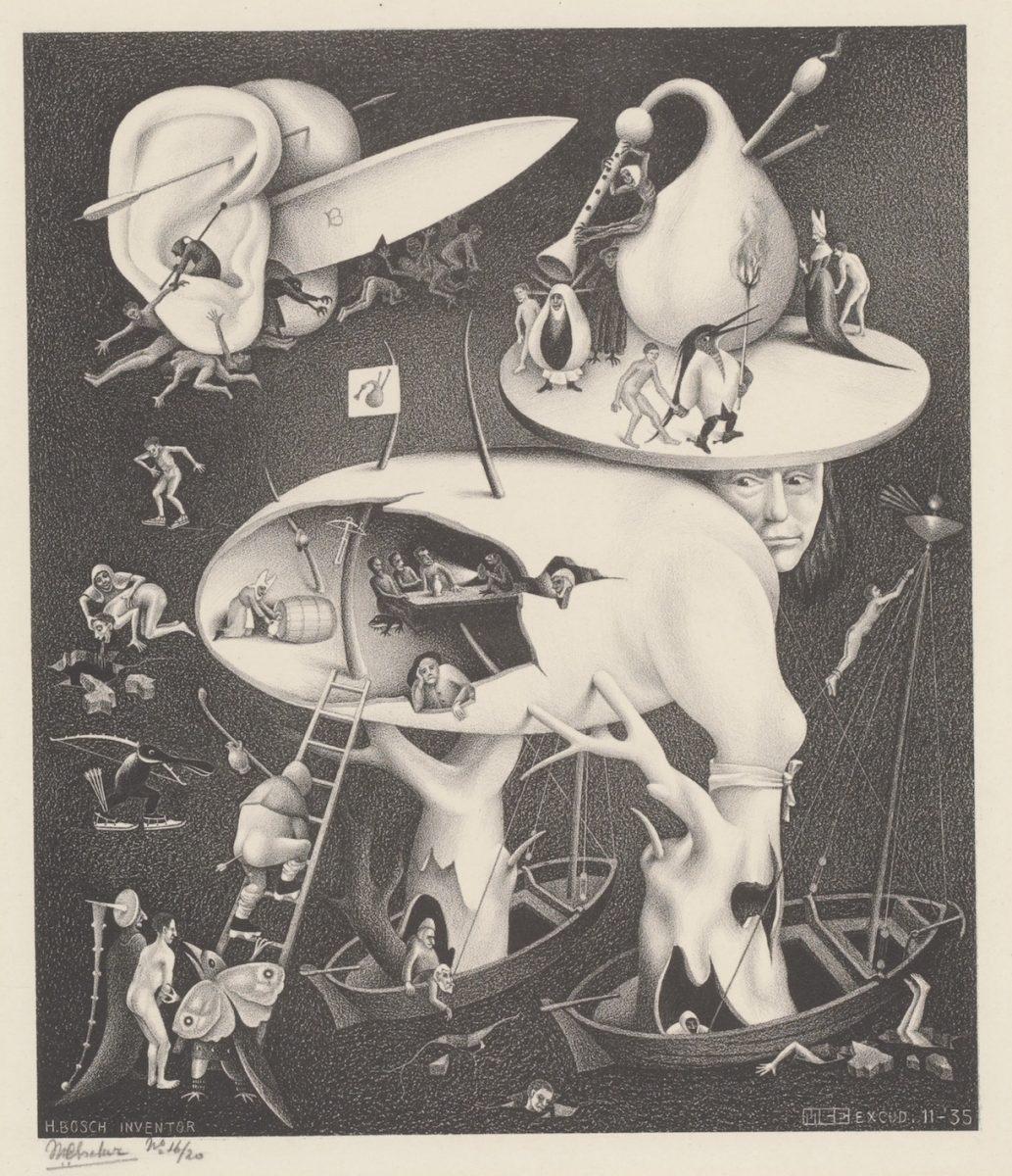
Gruesome white snowy misery
It is precisely this scene from Bosch’s work that is the only work of another artist that Escher ever reproduced. In 1922, he saw The Garden of Earthly Delights in person during a visit to the Museo del Prado, but it wasn’t until 13 years later that he made a copy of part of Hell.
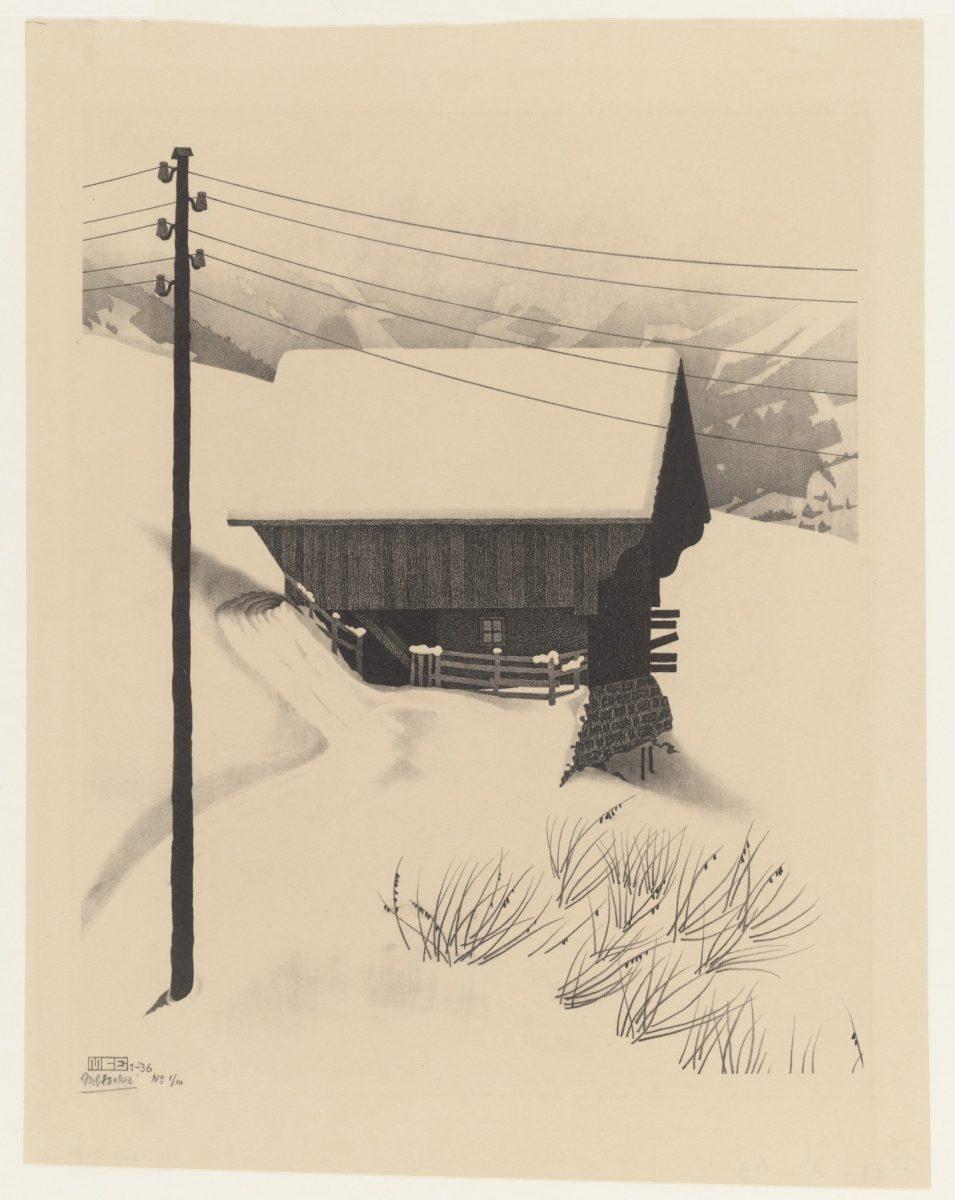
Why did he wait until then? This had everything to do with where he was at the time.
"During the winter of 1935-36, we were in the Swiss mountains, in that gruesome white snowy misery (I hate that white shroud that covers the earth) between high mountains, which I also hate,"
writes Escher about the period in which he created this lithograph in 1940. He couldn't even appreciate his own beautiful lithograph Snow, which he made in this period. Escher’s family was relocated in 1935 from sunny Rome to Switzerland. And whilst the children enjoyed playing in the snow, their parents were wasting away. Escher hated it there and his wife became depressed. At precisely that time, he made his only ever reproduction of the work of another artist: Hell. As if he were only able to express his own misfortune through someone else’s work.
23 years later
Elements from Hell reappear later in Escher’s masterpiece Belvedere. The noble woman in the bottom right-hand corner in particular, as well as the man at her side and the stairs a floor above seem to have been inspired by Hell. Even 23 years after reproducing Bosch's work, the influence can still be seen in Escher’s work.
It appears that even a one-man art movement never stands alone.
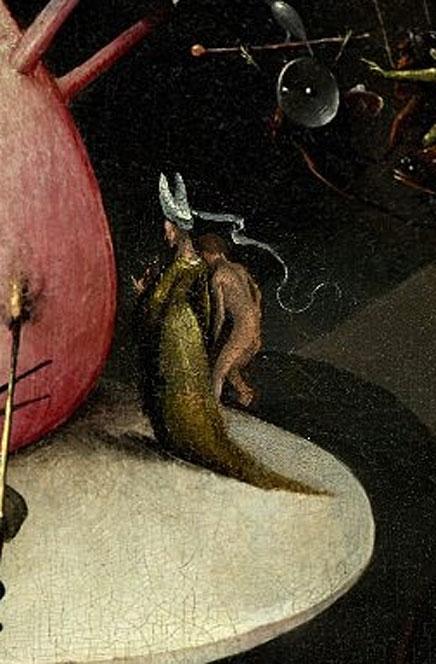
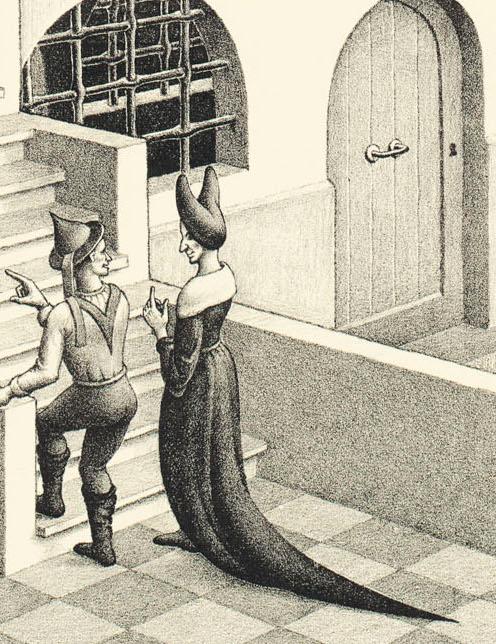
More stories about Escher

Reflections of fascination

